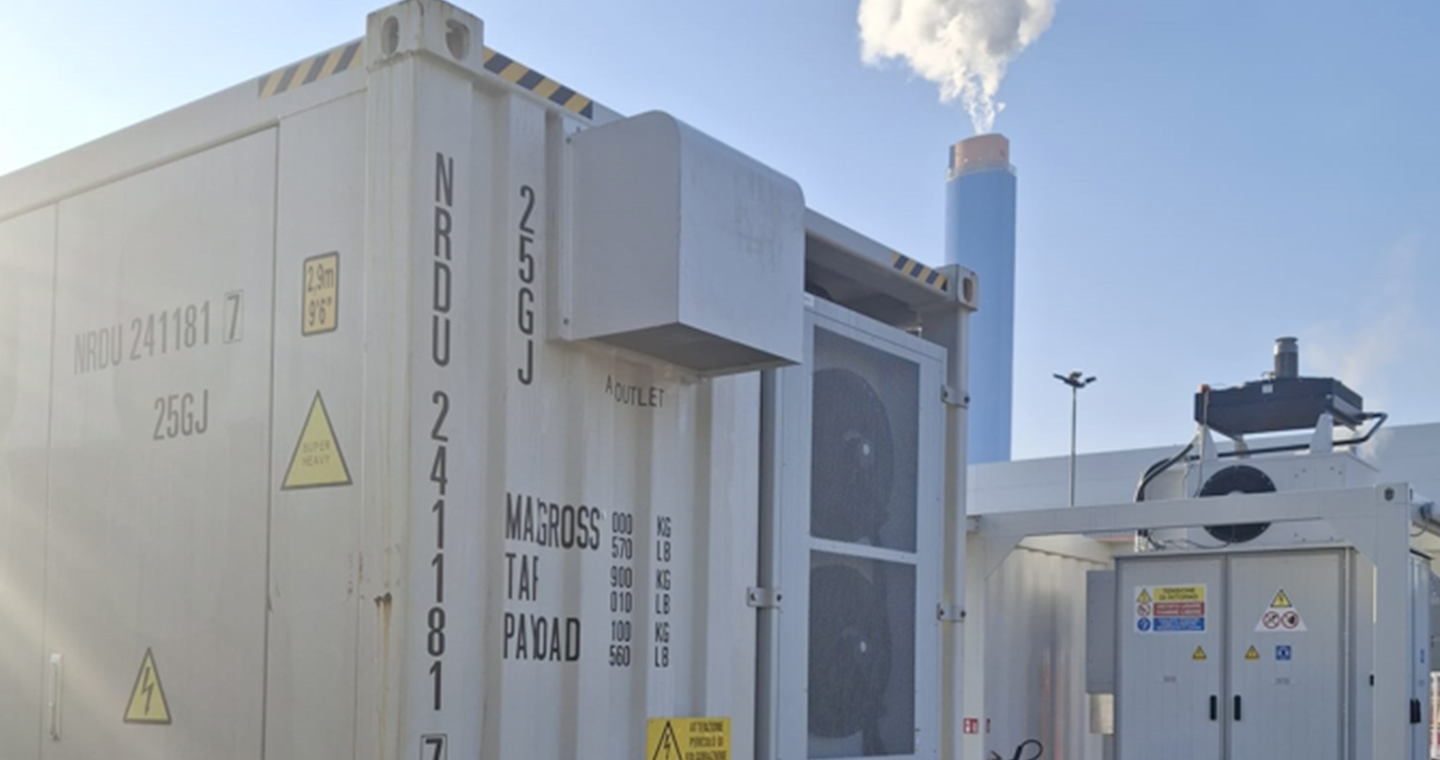In an era where clean and sustainable energy plays an increasingly predominant role, Battery Energy Storage Systems (BESS) emerge as key elements in transforming the energy sector and represent a fundamental resource for addressing challenges related to the integration of renewable sources, demand management, and grid stabilization.
At VINCI Energies Building Solutions Italia, in partnership with Omexom – a brand of the VINCI Energies Group specialized in the design and implementation of energy infrastructures – we have overseen the installation of a BESS system in Italy for a client operating in the electrical energy sector.
BESS: What It Is and How It Works
BESS are energy storage systems based on rechargeable batteries that store electrical energy for future use.
Typically, the system includes:
- Lithium batteries
- Battery management systems (BMS)
- Inverters to convert energy from direct current (DC) to alternating current (AC) and vice versa
- Control systems
The batteries recharge using excess electricity generated from renewable sources, such as wind farms or solar panels, or through the grid during periods of low demand.
Once charged, the battery can release energy when needed, such as during peak demand or when renewable sources are unavailable.
Among the advantages of BESS are their adaptability for various purposes, including frequency and voltage regulation of the grid, reduction of grid congestion, support for electricity service continuity during blackouts, balancing energy supply and demand, and supporting distributed generation.
Some Applications of BESS:
- Peak Shaving: The process of reducing energy consumption peaks during high-demand periods. BESS play a crucial role in this process by helping to lower overall electricity costs and reducing the need for new power plants or upgrades to the existing grid.
- Microgrids: Small, independent power systems that can operate either connected to or disconnected from the main grid. Integrating BESS into microgrids provides backup power during outages and stabilizes the grid during peak demand periods.
- Uninterruptible Power Supply (UPS): Devices designed to provide continuous power to connected equipment even in the event of a main power failure. BESS integration ensures that critical equipment continues to function without interruption, even during blackouts.
The Project
For a client operating in the transport sector, at their site in Turin, we oversaw several aspects of the installation of a BESS (Battery Energy Storage System).
The project involves the installation of an electrical energy storage system through the above-ground placement of battery storage units housed in prefabricated technical enclosures.
The system has a storage capacity of 3 MW and is composed of:
-
1 battery housing cabin (Battery Pack), placed on reinforced concrete plinths
-
1 conversion/transformation cabin (Power Conversion Station), placed on a reinforced concrete slab
-
1 user cabin (User Cabin), consisting of a prefabricated containment pit
Electrical connections between the above elements are provided via underground cable ducts.
Currently in its final testing phase, the project stands out for its high degree of innovation, made possible by the adoption of a BESS system.
These battery storage systems offer numerous advantages: they improve overall efficiency, ensure greater operational flexibility, enable faster response times, and involve lower costs compared to other energy storage technologies.
All of these features make them strategic tools for achieving environmental sustainability goals and enhancing the resilience of energy infrastructure.
Project Phases Managed by VINCI Energies Building Solutions Italia:
-
Installation of containers, transformer, and inverter
-
Laying and connection of all DC and AC connecting cables
-
Electrical testing of installed cables
-
Commissioning support
In conclusion, battery-based energy storage systems (BESS) are a key component for energy efficiency and intelligent electricity management.
